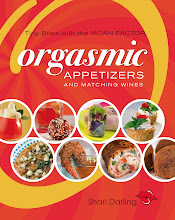
When I was a kid my mom would always repeat, “Eat your spinach. It’s good for you.” Somehow my mom knew instinctively that spinach was a super food. I should have realized its power, given Popeye’s love for it.
I was too busy indulging my immature palate with corn, macaroni and cheese, chocolate, pizza, potato chips and French fries (Yippee!!). I was laying the groundwork for my carbohydrate addiction. Unfortunately, there’s no 12-step program for this gut-expanding, flab producing, artery blocking, childish diet program.
However, I’ve learned that adding super foods to one’s diet will aid in boosting the immune system and fighting disease.
Dr. Steven Pratt is considered the Superman of super foods. He is a world-renowned authority on the role of nutrition and lifestyle in the prevention of disease and optimizing health. He is also a senior staff ophthalmologist at Scripps Memorial Hospital in La Jolla, Calif., and an assistant clinical professor at the University of California at San Diego.
Pratt is the author of SuperFoods Rx: Fourteen Foods. According to Pratt, about 14 super foods are better for you than others. He says, “Each food was selected based on gold standard research of healthy dietary patterns around the world. These foods are an integral part of all the recognized healthy dietary patterns that prevent disease and extend our health span, and perhaps our life span, as well.”
His list of 14 include beans, blueberries, broccoli,
1. Beans: A great low-fat, low-calorie source of protein and an easy way to help control your weight and your blood sugar.
2. Blueberries: The best food on the planet to preserve a young brain as we mature.
3. Broccoli: The best food on the planet to prevent cancer.
4. Oats: A sure-fire way to lower your cholesterol.
5. Oranges: The most readily available source of vitamin C, which in turn lowers the rate of most causes of death in this country, for example, heart disease and cancer.
6. Pumpkin: Loaded with phytonutrients, which keep our skin young and help prevent damage from sunlight.
7. Wild salmon: A guaranteed way to lower your risk for cardiac-related death.
8. Soy: The only complete vegetarian source of protein.
9. Spinach: The best food on the planet to prevent cataracts and age-related macular degeneration, thus ensuring a lifetime of good vision.
10. Tea -- green or black: The easiest and cheapest no-calorie way to avoid heart disease and cancer.
11. Tomatoes: One of the easiest ways for men to avoid prostate cancer is the consumption of tomatoes and tomato-based products.
12. Skinless turkey breast: The leanest meat source of protein on the planet.
13. Walnuts: Consuming walnuts is an easy, tasty way to lower your risk of cardiovascular disease.
14. Yogurt: A tasty, easy way to boost your immune system.
Super foods are those packed with nutrients, aiding your body in boosting your immune system and fighting off all forms of disease.
Studies now show that red wine, consumed in moderation, with meals contributes toward a healthy lifestyle. So, there’s absolutely every reason why you should include red wine as part of your New Year’s resolution of eating right in 2006. You can cut down on fat, or calories or carbohydrates and still enjoy a glass of the fermented red grape.
Research shows that where the diet is high in fat, those who drink red wine with meals have a lower incidence of heart attacks. Many experts believe that red wine contains compounds, such as antioxidants, that aid in protecting our hearts and reducing the risk of strokes. Resveratrol is the most famous antioxidant found in red wine. It is believed to be good at mopping up chemicals responsible for causing blood clots, the primary cause of heart disease. Guercetin is another antioxidant believed to help prevent lung cancer. Red wine also has a flavanoid known as catechin that contributes to the reduction of heart attacks, as well.
Add to this that a glass of red wine after a stressful day acts as a natural tranquilizer, reducing anxiety and tension. Wine also aids in our digestion and contributes minerals and vitamins to our bodies.
A glass of red wine is also okay if you’re on a low carbohydrate diet. A 3.5 ounce glass of red wine contains only 1.8 grams of net carbohydrates. If you’re reducing your caloric intake, you’ll be happy to know that this same glass of wine only contains 74 calories.
While it is always pleasant to include a glass of red wine with your evening meal, it’s an experience of the senses to choose one that harmonizes with your main entrée.
There are basically three styles of red wine. The first is light, fruity red wines, which include those produced from grape varieties, such as Gamay or Pinot Noir. These wines tend to be refreshing, fruity with some sourness. For this reason it is best to chill your light reds for a half hour in the refrigerator before serving. Light, fruity red wines go nicely with ingredients offering sourness as their predominant building block. Foods highlighting sourness are cheeses, such as fresh Chevre, feta, as well as sour cream and cream cheese. When it comes to fish, tuna and salmon work nicely with light, fruity reds.
Red wines with forward fruit character is another wine style. Wines that fall into this category include shiraz, zinfandel and merlot. These wines tend to be low in sourness and low in bitterness with lots of berry fruit flavours. Pair these wines with roasted meats and vegetables, pasta or pizza with roasted tomato sauce, chicken or beef.
Austere red wines are heavy with lots of pleasant bitterness from the tannin and fattiness from their high alcohol content – about 13.5 to 14%. Cabernet sauvignon and cabernet franc are two grape varieties fermented into austere red wines. These reds work well with game meats and beef. Due to their bitterness, you can also pair them with foods offering bitterness, such as olives, radicchio and blue cheese.






